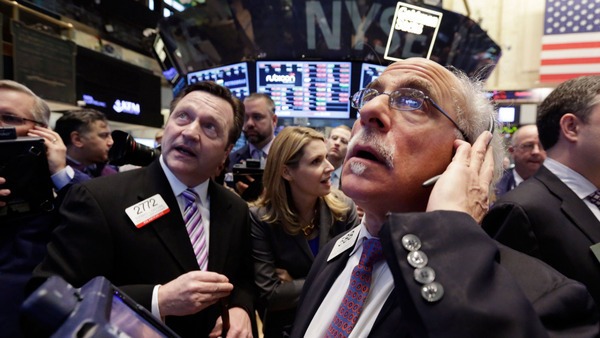On Tuesday, Shares of General Electric Company (NYSE:GE), lost -2.51% to $23.27.
Academic medical centers across the U.S. are experiencing increasing pressure to enhance value – deliver higher quality at lower cost – as they continue to face challenges related to outcomes, cost control, market competition, and other dynamics. Initiatives to promote value typically involve reimbursement arrangements between health insurers and providers that align financial, efficiency and quality incentives.
Recently, Temple University Health System (TUHS) and GE Healthcare declared a pioneering, first-of-its-kind risk partnership between a health care technology company and an academic medical center that aligns incentives to promote value by providing higher-quality radiologic imaging services more efficiently at a lower cost.
The new arrangement targets improvements in specific operational, clinical and financial outcomes, putting TUHS on the cutting edge of delivering high-value imaging services across a health system and making GE Healthcare a pioneer in what could become a preferred business model over the next few years.
Under the seven-year agreement, TUHS and GE Healthcare will work together to achieve performance aims enabled by new technology and industry best practices. TUHS will modernize its radiological imaging equipment with state-of-the art technology from GE, while also benefitting from enhancements, counting data storage and retrieval, service contract consolidation and consultation to optimize scheduling and workflow efficiency. The arrangement comprises financial incentives aligning the parties toward realizing shared objectives, counting a targeted $39 million in operational savings over the life of the contract.
General Electric Company (GE) operates as an infrastructure and financial services company worldwide. The company’s Power and Water segment offers gas, steam and aeroderivative turbines, nuclear reactors, generators, combined cycle systems, controls, and related services; wind turbines; and water treatment services and equipment.
Shares of Wal-Mart Stores Inc. (NYSE:WMT), declined -1.33% to $63.10, during its last trading session.
Wal-Mart Stores assists people around the world save money and live better - anytime and anywhere - in retail stores, online, and through their mobile devices. Each week, nearly 260 million customers and members visit our 11,532 stores under 72 banners in 28 countries and e-commerce websites in 11 countries. With fiscal year 2015 revenue of $485.7 billion, Walmart employs about 2.2 million associates worldwide. Walmart continues to be a leader in sustainability, corporate philanthropy and employment opportunity.
Wal-Mart Stores, Inc. operates retail stores in various formats worldwide. The company operates through three segments: Walmart U.S., Walmart International, and Sam’s Club. It operates discount stores, supermarkets, supercenters, hypermarkets, warehouse clubs, cash and carry stores, home improvement stores, specialty electronics stores, restaurants, apparel stores, drug stores, and convenience stores, in addition to retail Websites, such as walmart.com and samsclub.com.
Finally, Hertz Global Holdings, Inc. (NYSE:HTZ), ended its last trade with -2.32% loss, and closed at $16.41.
Hertz Global Holdings, which comprises the Hertz, Dollar and Thrifty brands, has declared the expansion of its Green Traveler Collection fleet to comprise the 2016 Hyundai Sonata Hybrid in select cities across the U.S.
“Hertz is always looking for opportunities to improve and grow our sustainability efforts, in addition to provide customers vehicle rental options that are fuel efficient, so we’re excited to add the newly redesigned Hyundai Sonata Hybrid to our green fleet,” said Tom Frese, Senior Vice President, Fleet and Procurement.
The new Sonata Hybrid, rated at 40 mpg city and 44 mpg highway, switches seamlessly between a gasoline engine and an electric motor to deliver efficient power. The gasoline engine delivers the primary charge energy for the lithium polymer batteries, while the regenerative braking system captures the energy created during braking and converts it into electricity to assist recharge the hybrid’s lithium polymer batteries. For flexible loading, the Sonata Hybrid features a 60/40 split fold-down rear seatback. The vehicle’s battery pack has been designed to fit below the trunk floor, giving drivers a flat, unobstructed space for loading.
The Sonata Hybrid is available to rent at airports counting Los Angeles, Orange County, San Francisco, Atlanta, Dulles International, and Chicago, in addition to cities such as San Jose, San Diego and Long Beach in California; Portland, Oregon; and Denver. The new Sonata Hybrid is just one of Hertz’s smart mobility rental choices available in the Company’s Green Traveler Collection, a line of hybrid, electric and clean diesel vehicles that offer high-fuel efficiency while being easy on the wallet. All of the Green Traveler cars have fuel efficiency ratings starting at 33+ highway mpg.
Hertz Global Holdings, Inc., through its auxiliaries, rents and leases cars and trucks in the United States and internationally. It operates in four segments: U.S. Car Rental, International Car Rental, Worldwide Equipment Rental, and All Other Operations.
DISCLAIMER:
This article is published by www.wsnewspublishers.com. The Content included in this article is just for informational purposes only. All information used in this article is believed to be from reliable sources, but we make no representations or warranties of any kind, express or implied, about the completeness, accuracy, or reliability with respect to this article.
All visitors are advised to conduct their own independent research into individual stocks before making a purchase decision.
Information contained in this article contains forward-looking information within the meaning of Section 27A of the Securities Act of 1933 and Section 21E of the Securities Exchange Act of 1934, counting statements regarding the predictable continual growth of the market for the corporation’s products, the corporation’s ability to fund its capital requirement in the near term and in the long term; pricing pressures; etc.
Any statements that express or involve discussions with respect to predictions, expectations, beliefs, plans, projections, objectives, aims, assumptions, or future events or performance may be forward looking statements. Forward-looking statements are based on expectations, estimates, and projections at the time the statements are made that involve a number of risks and uncertainties, which could cause actual results or events to differ materially from those presently anticipated. Forward looking statements may be identified with such words as expects, will, anticipates, estimates, believes, or by statements indicating certain actions may, could, should/might occur.



